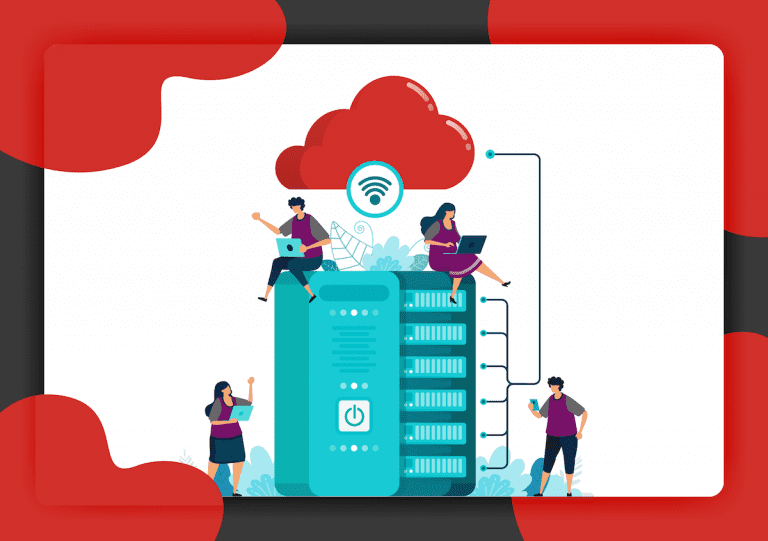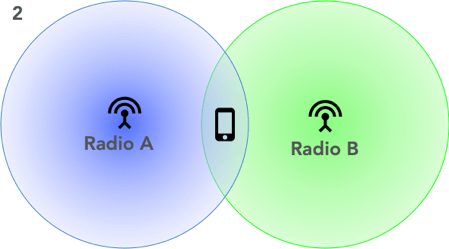Latency
CableLabs Certifies First Cable Modem with Low Latency DOCSIS® Support

CableLabs is pleased to announce that, for the first time, a DOCSIS® 3.1 specification–compliant cable modem that includes the Low Latency DOCSIS (LLD) set of features has become CableLabs Certified. This announcement represents a major milestone on the path toward 10G because LLD support is key to improving latency on DOCSIS networks, and improving latency is one of the pillars of 10G.
Starting with Certification Wave (CW) 134 in January, all DOCSIS 3.1 cable modems submitted for CableLabs certification are required to include support for the LLD feature set. Our Kyrio subsidiary recently finished testing the Motorola MG8725 from Minim, which was submitted for testing in that CW. The CableLabs Certification Board—made up of representatives from our member companies—then reviewed the results and determined that the device had met the requirements for CableLabs Certification.
The modem can be found on the Certified/Qualified Device List on the CableLabs website with an ID of MOTO1341. Any DOCSIS 3.1 cable modems added to that list in the future for CW 134 or later will also include support for the LLD feature set.
What Is Latency?
As described in our "Latency 101: Getting From There to Here" blog, latency refers to the time it takes for something to get from one point to another across a network. People experience this delay when doing things on the Internet, and it can come from myriad sources. Although latency performance often does not receive the same attention as speed, it’s one of the most noticeable aspects of a user’s online experience.
What Is Low Latency DOCSIS?
As described in our blog post “CableLabs Low Latency DOCSIS Technology Launches 10G Broadband into a New Era of Rapid Communication,” LLD technology is a set of new features for DOCSIS 3.1 (and future) equipment that can be added to already deployed devices via a software update. LLD can provide consistent low latency (as low as 1 millisecond) on the access network for the applications that need it. The user experience will be more consistent with much smaller delay variation.
Why Is Low Latency DOCSIS Important?
In our blog post “Rise of Cloud Gaming—Meeting the Challenges for ISPs,” we discussed applications such as online gaming and game streaming that can provide greatly improved user experiences with reduced, consistent latency. But latency isn’t just about gaming: Many work-from-home applications such as video conferencing can benefit from improved latency. And future technologies like interactive virtual experiences will require consistently low latencies as well.
What Is CableLabs Certification, and Why Does It Matter?
As detailed in our blog post “What’s in a Name? The Value of Certification/Qualification for Cable Operators,” in order for a device to become CableLabs Certified, Kyrio executes a series of tests to determine whether the device complies with a particular CableLabs specification. Once that testing is completed, the results are reviewed by the Certification Board to determine whether that device has earned CableLabs Certification status.
CableLabs Certification, therefore, serves as a mark of quality, indicating that a given device complies with the requirements of our specifications and enabling cable operators to roll out the device. CableLabs and Kyrio offer a number of options to assist vendors through the certification process—as detailed in our blog post “3 Tips on How to Make CableLabs Certification/Qualification Testing as Painless as Possible”—including interoperability events and device pre-testing.
A cable modem with LLD functionality that successfully completes CableLabs Certification represents a big step on the path to eventual wide deployment of these technologies, enabling a host of new applications and improved user experiences. We can’t wait to see the new ideas that will generate.

Latency
Rise of Cloud Gaming – Meeting the Challenges for ISPs

 Light Reading recently posted an article titled "Operators need to prepare for the game-streaming tsunami" which talks about a new wave of game streaming services (aka cloud gaming services) that are on the way. The article points out that the network demands these services require are completely different from anything cable operators have had to deal with before: cable operators cannot simply assume the work that was done previously in order to better support video streaming will be sufficient to effectively support game streaming. They warn that ISPs should get ahead of the network demands of the new game streaming services or replay the pain of the past. We are all familiar with the exasperation of watching the spinning loading “ball” in the middle of our favorite movie scene; imagine the frustration when things suddenly lock up or lag in the middle of an intense game.
Light Reading recently posted an article titled "Operators need to prepare for the game-streaming tsunami" which talks about a new wave of game streaming services (aka cloud gaming services) that are on the way. The article points out that the network demands these services require are completely different from anything cable operators have had to deal with before: cable operators cannot simply assume the work that was done previously in order to better support video streaming will be sufficient to effectively support game streaming. They warn that ISPs should get ahead of the network demands of the new game streaming services or replay the pain of the past. We are all familiar with the exasperation of watching the spinning loading “ball” in the middle of our favorite movie scene; imagine the frustration when things suddenly lock up or lag in the middle of an intense game.
Here at CableLabs, we agree with Light Reading’s assessment of the importance of readying operator networks for the impact of game streaming services. Although cloud gaming is still in its early adoption phase, Sandvine’s May 2020 Phenomena Report shows NVidia’s GeForce Now game streaming service in the top 10 gaming traffic generators.
The good news is that CableLabs has been building and testing latency and congestion management solutions for some time, including one that is well-tailored to game streaming. The suite of features developed by CableLabs and our industry partners, known as Low Latency DOCSIS® (LLD), can provide better customer experiences for both current multiplayer online gaming and emerging cloud gaming performance services.
An early observation of the low latency team at CableLabs was that different applications have different traffic patterns and needs, which ultimately require different solutions for reducing and managing latency. This is true even between seemingly related applications like online gaming and game streaming:
- Multiplayer online gaming uses very low data rates (~150kbps) but can be very sensitive to latency and jitter (variations in latency).
- Game Streaming – running the game on a remote server and streaming it to an end device – is also very sensitive to latency and jitter, but also requires high data rates on the order of tens of megabits per second, and cannot be buffered since it’s played in real-time.
Latency for online gaming comes not from a lack of capacity – since the data rates are very low – but rather from gaming traffic getting caught behind other types of traffic that aren’t latency sensitive. Therefore, LLD employs tools to keep that gaming traffic from getting stuck without impacting other traffic negatively.
Game streaming, because of the high data rates involved, requires the addition of something more: the ability to be able to sense and adapt to changing capacity along the network path at any bottleneck. This is why support for Low Latency, Low Loss, Scalable Throughput (L4S) is a part of LLD technology. L4S technology builds on the mechanisms developed for online gaming by enabling the network to provide precise feedback to applications about impending congestion. If implemented by an application at both ends of a network connection as well as any bottleneck points in between, it permits the application to send at high data rates while maintaining consistent low latency.
Therefore, by deploying DOCSIS equipment that supports the LLD feature set – including L4S support – cable operators will be able to provide the very best game streaming experience as soon as those services incorporate L4S support.
While gamers will be thrilled with this, LLD technology doesn't just apply to gaming: when implemented by application developers, it will also enable improved service for work-from-home applications like video conferencing, making DOCSIS based cable systems the platform of choice for these demanding applications. That’s why latency is one of the pillars of the cable industry’s 10G Platform.
Even better, availability of DOCSIS equipment that supports LLD is just around the corner. CableLabs has been actively working jointly with equipment suppliers to bring these features to market as soon as possible via software updates to their existing DOCSIS 3.1 equipment. We’ve seen support for these features rapidly evolve, and we will continue to support the industry in getting these features deployed in live networks. We’re always interested in working with more partners on testing and validation of these emerging technologies and applications, so please reach out to us here at CableLabs if you’d like to get involved or learn more.
There is a tsunami coming, but with preparation, it will be a tsunami of awesome.

Latency
The March to Budget-Friendly vRAN Continues!

As with most of my recent blog posts, I’m here to share some exciting updates on the work that CableLabs has been doing in the Telecom Infra Project (TIP) with virtualized RAN for non-ideal transport networks—for example, DOCSIS networks, passive optical networks (PONs) and really anything not on dedicated fiber. Over the past 6 months or so, we’ve reached some milestones that are worth a blog post blast. I’m going to keep each update brief, but please follow the links to dig in further where you’re interested.
TIP vRAN Fronthaul White Paper #2
On November 13, TIP’s vRAN Fronthaul Project Group is releasing a white paper discussing the results of Phase 1 of the project. The paper covers the combined learnings from the four Community Lab efforts led by Airtel, BT, CableLabs and TIM. We also include some key takeaways with which operators can assess the network assets that can be used in future vRAN deployments. You can find the paper here.
TIP Summit vRAN Fronthaul Demo
Also this week, the vRAN Fronthaul team has assembled a demo for TIP Summit ’19 in Amsterdam. The demo is showing the newly containerized multi-vendor vRAN solution running two remote radios (RUs) from a single CU/DU virtual baseband unit. In the LTE software stack, the Layer 2 and 3 containers come from Altran, and the Layer 1 container comes from Phluido, with RUs from Benetel. The containerized setup increases CPU efficiency by over 80 percent relative to our previous virtual machine–based architecture. If you’re in Amsterdam at TIP Summit, be sure to stop by the vRAN stand on the show floor.
TIP vRAN Fronthaul Trial with Shaw Communications
In July of this year, Shaw Communications, CableLabs and TIP collaborated to trial the vRAN Fronthaul LTE solution from Altran, Benetel, and Phluido over the Shaw commercial grade DOCSIS networks. In a fantastic result, we were able to demonstrate the ability of the Shaw DOCSIS networks to support Option 7-2 split fronthaul traffic for LTE services. In addition, we replicated all of our lab findings over the Shaw DOCSIS networks, validating the ability of our lab results to transfer to real world networks. “The trial demonstrated that Shaw’s hybrid fibre coaxial FibrePlus network is well positioned to support not only existing wireless services but the significant densification coming with the deployment of 5G,” said Damian Poltz, Vice President, Technology Strategy and Networks, Shaw Communications.
O-RAN Specification Includes Non-Ideal Fronthaul
While the team was busy hitting all these milestones in the TIP vRAN Fronthaul project, during the first half of the year CableLabs also led a collaborative effort to bring non-ideal fronthaul support to the O-RAN Alliance CUS plane specification. As of July, the 2.0 version of the CUS plane specification now includes support for non-ideal fronthaul with latencies up to 30ms over a common Option 7-2 interface. In addition, a new appendix was added to provide further detail on the implementation and operational specifics of deploying the lower-layer split over non-ideal transport such as DOCSIS networks, PON or managed Ethernet.
You can find out more by clicking the link below.

Latency
Gearing Up for 10G: Download the Technical Brief on CableLabs’ Low Latency Technologies for DOCSIS Networks

If you’ve been following our blog and our recent 10G announcement, you know that one of the main areas of focus for us is latency. Achieving a near-zero latency on DOCSIS networks is one of the goals of the 10G initiative and is just as important as increasing speed or bandwidth. The success of future 10G networks that can support seamless communication and next-level interactive experiences like holodecks and 360° video is heavily dependent on finding technological solutions that decrease latency to imperceptible levels, delivering consistent, real-time responsiveness that our customers desire.
The good news is we are well on our way to getting there. So far we’ve released a number of specifications, including Low Latency DOCSIS (LLD) and Low Latency Mobile Xhaul (LLX), aimed at reducing latency in the DOCSIS networks that provide residential services and also serve as backhaul, midhaul and fronthaul (collectively known as xhaul) for mobile traffic.
Low Latency DOCSIS (LLD)
In modern households, there are often multiple applications and devices connected to the same network at the same time, sending and receiving a variety of traffic. Some, like streaming video and large file downloads, send repeated large bursts of data and expect the network to buffer and play-out those bursts, while others, like online gaming and voice chat, send traffic smoothly. Ordinarily, the traffic from the smooth senders is subjected to the widely varying buffering latency caused by the bursty senders. LLD technology is optimized for these two different types of traffic behavior, and decreases delays for smooth sending applications (many of which are latency-sensitive) without affecting the other traffic. Low Latency DOCSIS technology can support a consistent sub-1ms latency round-trip for the smooth sending applications, resulting in a much better network performance overall.
Low Latency Mobile Xhaul (LLX)
LLX leverages collaboration between the mobile network scheduler and the DOCSIS scheduler to provide a low latency xhaul solution that achieves a consistent DOCSIS upstream delay of just 1 to 2 milliseconds. LLX also defines a common quality of service framework for both mobile and DOCSIS so that the relative priorities of different traffic streams are maintained across the two systems. In the foreseeable future, deploying LLX technology will help solidify DOCSIS cable networks as the xhaul transport of choice, capable of supporting the latency requirements of 5G and beyond.
For more detail, please download the following member-only technical brief on Low Latency Technologies for DOCSIS Networks which includes information about sources of latency, how we address them, implementation strategies and more.
If you’re not yet a CableLabs member, find out how you can become one here.

Latency
CoMP over DOCSIS: Femtocells in the Age of vRAN

As promised in the last couple blogs discussing DOCSIS based femtocells, we’ve saved the best for last. So far in the series, we’ve made the case for femtocells over DOCSIS networks and laid out the total cost of ownership (TCO) benefits of this deployment model. In this final blog post, I’ll share the results of some testing we’ve been doing at CableLabs on using Coordinated Multipoint (CoMP) to optimize femtocell performance in dense deployments.
Decluttering the Radio Signal
Let’s step back and look at a key issue that has limited the benefit of femtocells in the past: intercell interference. When femtocells (or any cells, for that matter) are placed in close proximity, the radio signals each cell site produces can bleed into its neighbor’s territory and negatively affect network performance.
With CoMP, neighboring cells can coordinate their transmissions in a variety of ways to work collaboratively and prevent interference. They can share scheduling and beamforming data to avoid creating interference. Or, they can use joint processing, which allows multiple cells to talk to a single cell phone at the same time, increasing the signal quality.
Although it’s not a perfect analogy, it’s a bit like trying to listen to a bunch of people singing their favorite song at the top of their lungs versus listening to a choir following a conductor, as you see in the following figure. The former is old femtocells, and the latter is virtualized RAN (vRAN) femtocells using CoMP.

Icons made by Freepik from Flaticon is licensed by CC 3.0 BY.
Since its inception, CoMP has been largely believed to require fiber transport links to work. For example, in TR 36.819, there’s a whole section devoted to the impact of “higher latency communication between points,” where “higher” refers to 5ms, 10ms or 15ms of latency. In that text, gains decrease as latency increases, ultimately going negative (i.e., losses in performance).
However, with the increase in attention on vRAN, particularly lower-layer splits like the work going on in Telecom Infra Project (TIP) vRAN Fronthaul and O-RAN Alliance WG4, latency takes on new meanings with respect to CoMP.
For example, what matters more, the latency from one radio unit to another or the latency from one virtualized baseband unit (vBBU) to another? And if it’s the latter, does that mean CoMP can provide benefit even over long-latency non-ideal vRAN fronthaul like DOCSIS?
To find out the answers to these questions, we set up a test bed at CableLabs in collaboration with Phluido to explore CoMP over DOCSIS. We used the hardware from the TIP vRAN Fronthaul project, with an LTE SW stack provided by Phluido that supports CoMP. We installed two radio units in different rooms, each radio connected via a DOCSIS® 3.0 network to the vBBU. We designated two test points, one with a phone located at the cell center, the other with both phone in the cell edge/cell overlap region.
Notably in our setup, the latency from radio unit to vBBU and radio unit to radio unit were both about 10ms. However, the latency between vBBUs was essentially zero as both radios shared the same vBBU. This setup is specifically designed to test whether vBBU-to-radio latency or vBBU-to-vBBU latency is more important for CoMP gains.
Gains!
What we found is that radio-to-radio latency and radio-to-vBBU latency can be quite large in absolute terms, and we can still get good CoMP performance provided that latency is low between the vBBUs and that vBBU-to-radio unit latency is similar for the radios in the CoMP cluster, as you see below.

In other words, to realize CoMP gains, the relative latency between a set of cells is more important than the absolute latency from vBBU to each radio.
We tested four configurations of phones at the cell center versus the cell edge, or some mix thereof, as the following figure shows.




In case 1, we see full cell throughput at each phone with CoMP enabled or disabled. This is great; this result shows that we haven’t lost any system capacity at the cell center by combining the cells into a single physical cell ID (PCI) and enabling CoMP.
In case 2, the phone throughput jumped from 55 Mbps to 78 Mbps when we enabled CoMP, showing a CoMP gain of almost 50 percent.
In case 3, when we enabled CoMP, the phone at the cell edge saw a throughput gain of 84 percent. In this scenario, the throughput of the cell center phone saw a decrease in throughput. This illustrates a tradeoff of CoMP when using legacy transmission modes (TM4, in this case) where the operator must choose whether it wants to favor cell edge users or cell center users. With more advanced transmission modes (e.g., TM10), this tradeoff is no longer an issue. Note that this is true of any CoMP deployment and not related to our use of DOCSIS network fronthaul.
In case 4, we expected to see significant gains from CoMP, but so far we haven’t. This is an area of further investigation for our team.
vRAN Femtocell CoMP in MDUs
Let’s look at an example use case. Cell service in multi-dwelling units (MDUs) can be challenging. A combination of factors, such as commercial construction materials, glazing and elevation, affect the indoor signal quality. As discussed in my previous blog, serving those indoor users can be very resource intensive.

As an operator, it would be great to have a low-cost way to deploy indoor cells. With vRAN over DOCSIS networks supporting CoMP, the operator can target femtocell deployments at heavy users, then build CoMP clusters (i.e., the set of radios that collaborate) as needed to optimize the deployment.
Putting It All Together
The testing described here has shown that CoMP gains can be realized even when using long-latency fronthaul over DOCSIS networks. As these solutions mature and become commercial-ready, deployments of this type will provide the following for operators:
- Low-Cost Hardware: vRAN radios, particularly for femtocells, are low-complexity devices because the majority of the signal processing has been removed and put in the cloud. These radios can be built into the gateway customer premises equipment (CPE) already deployed by operators.
- Low-OPEX Self Installs: With vRAN radios built into DOCSIS CPEs, operators can leverage the simplicity of self-installation. The ability to dynamically reconfigure CoMP clusters means that detailed RF planning and professional installation aren’t necessary.
- High-Performing System: As shown in our testing results, CoMP gains can be realized over DOCSIS network–based vRAN femtocells. This eliminates another of the previous stumbling blocks encountered by earlier femtocell deployments.

Latency
Enabling 5G with 10G Low Latency Xhaul (LLX) Over DOCSIS® Technology

I am a GenXer, and I am addicted to my iPhone. But it’s not just me, today’s consumers, millennials and baby boomers and everyone in between, are increasingly spending more and more time on their mobile devices. Have you ever wondered what happens to your traffic when you interact with your iPhone or Android devices? The traffic reaches a radio tower, but it doesn’t just stop there – it needs to reach the internet via a connection between the cellular base station and a distant data center.
Traditionally, that connection (a.k.a., “xhaul”) is mostly provided by fiber. Fiber has great speed and latency performance but is costly to build. With advancements in LTE and 5G, mobile operators are increasingly deploying more and more radios deeper into the neighborhoods. They will need a more scalable solution to provide that xhaul without sacrificing the performance. This is where the hybrid fiber coaxial (HFC) network can help.
With ubiquitous cable infrastructures that are already in place, the cable operators have the scalability to support today’s LTE and tomorrow’s 5G networks without the cost of building new fiber networks. With DOCSIS 3.0+ as well as Low Latency Xhaul (LLX) technology, the DOCSIS network has performance that is virtually indistinguishable from fiber. The CableLabs 10G technologies make the HFC network a better xhaul network, which is a win-win for the consumers, mobile operators, and cable operators.
How Low Latency Xhaul (LLX) Works
Today’s DOCSIS technology provides a good starting point for mobile xhaul but may not be enough to support the ultimate latency requirements needed for future mobile traffic. DOCSIS upstream latency can range from a typical of 8-12 milliseconds to around a maximum of 50 milliseconds under heavy load. We want to see that latency down to 1 to 2 milliseconds range in order to support 5G.
The LLX technology is specifically designed to reduce the latency experienced by mobile traffic while traversing the DOCSIS transport network on its way to the internet. The LLX technology development started about 3 years ago as a joint innovation project between CableLabs and Cisco. I wrote about it here and here.
So, how does LLX work? Let’s look at the case of LTE backhauled over a DOCSIS network as an example. Today, LTE and DOCSIS are two independent systems – their operations occur in serial, and the overall latency is the sum of the two system latencies. But from an engineer’s point of view, both technologies have a similar request and grant-based mechanism to access the channel. If the two processes can be pipelined, then LTE and DOCSIS operations can take place in parallel, removing the “sum” from the latency equation. To enable pipelining, we designed a protocol that utilizes a message called the bandwidth report (BWR) that allows the LTE network to share information with the DOCSIS network. Pipelining is a unique and inventive aspect of LLX and is the heart of what creates a low latency transport.

Operator Trials
So, just how well does LLX work? We have recently teamed up with Shaw, one of our Canadian members, as well as our technology development partners Cisco and Sercomm to perform a series of lab trials. The detail of the trials will be published in the upcoming SCTE Cable-Tec Expo in October. But as a preview, we demonstrated that even when the DOCSIS network is heavily loaded, LLX consistently reduced the DOCSIS upstream latency down to 1 to 2 milliseconds, all without adversely affecting other traffic.
Deploying LLX Technology
The LLX specification was published a few months ago, the result of collaborative efforts from key cable and mobile equipment vendors in the CableLabs-led LLX working group.
LLX technology is designed to work for a variety of deployment models, including backhaul and fronthaul, over DOCSIS as well as over PON networks. To this end, we have taken the technology to mobile industry standardization organizations such as the O-RAN Alliance whose current focus is fronthaul.
LLX works in the DOCSIS 3.0 and later networks as a software upgrade to the CMTS. It has been implemented on commercial DOCSIS and mobile equipment. More information on LLX is available here.
For those attending the SCTE Cable-Tec Expo in New Orleans, we will be discussing the innovation on the Innovation Stage at 12:45pm local time with my industry partners from Shaw, Cisco, and Sercomm. I will also dive deep into the technology and the Shaw trial results in my SCTE panel “Mobile X-haul and DOCSIS”, Wednesday October 2nd at 9am local time. Hope to see you there.




